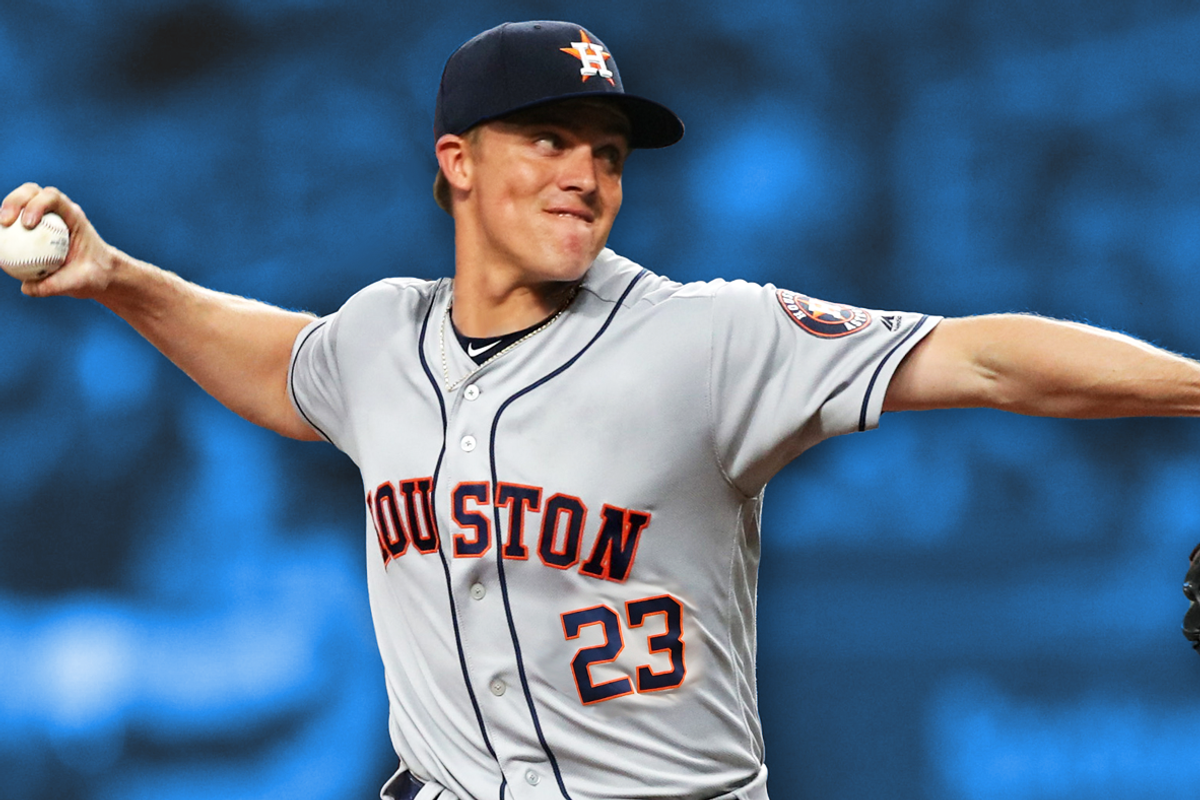
Composite photo by Brandon Strange
The Astros have made a trade for Zack Greinke of the Arizona Diamondbacks. The Astros get Greinke while sending prospects Seth Beer, Josh Rojas, Corbin Martin, and J.B. Bukauskas to the Diamondbacks in return. The Astros get a third ace to their rotation and do so without giving up the coveted prospects of Kyle Tucker and Forrest Whitley.
#Astros' haul: Zack Greinke, Aaron Sanchez, Joe Biagini.
— Ken Rosenthal (@Ken_Rosenthal) July 31, 2019
To dbacks for Greinke: Corbin Martin, jb buskauskas, 2 other recent high picks of theirs in system
— Jon Heyman (@JonHeyman) July 31, 2019
Greinke is 10-4 in 2019 with a 2.87 ERA and 128 strikeouts. While his strikeout numbers don't come close to those of Justin Verlander and Gerrit Cole, he is still a reliable arm that can go deep into games and get outs. He also sits second in the league in WHIP, currently at 0.94 which is second to only Houston's own Verlander.
Greinke has a great resume; he is a seven-time All-Star, five-time Gold Glove winner, and 2009 Cy Young winner in the National League. He currently sits 31st on the all-time strikeout leaderboard with 2,563 in his career. Zack also has plenty of experience in the postseason, starting in eleven games over five playoffs dating back to 2011. He has not, however, had great success in those starts, posting a 3-4 record and 4.03 ERA accumulatively.
His best start in the postseason came in 2014 with the Dodgers when he went seven shutout innings against the Cardinals in an NLDS win. This season, his best start was arguably the July 5th game at home against the Rockies where he went seven innings without allowing a run while striking out nine.
Greinke is far from a rental, he will be under team control through the end of the 2021 season, marrying him with the Astros for the same amount of time as Justin Verlander, should they keep him through his current contract.
The acquisition of Greinke is a strong move for Houston, who is vying to not only improve their chances to win in 2019 but in the coming years.
*Update:
The Astros also acquired Blue Jays pitchers Joe Biagini and Aaron Sanchez in exchange for Derek Fisher. Earlier Wednesday, Houston traded OF Tony Kemp to the Cubs for catcher Martin Maldonado.
Most Popular
SportsMap Emails
Are Awesome
Oswald Peraza hit a two-run single in the ninth inning to help the Los Angeles Angels snap a three-game losing skid by beating the Houston Astros 4-1 on Saturday night.
Peraza entered the game as a defensive replacement in the seventh inning and hit a bases-loaded fly ball to deep right field that eluded the outstretched glove of Cam Smith. It was the fourth straight hit off Astros closer Bryan Abreu (3-4), who had not allowed a run in his previous 12 appearances.
The Angels third run of the ninth inning scored when Mike Trout walked with the bases loaded.
Kyle Hendricks allowed one run while scattering seven hits over six innings. He held the Astros to 1 for 8 with runners in scoring position, the one hit coming on Jesús Sánchez’s third-inning infield single that scored Jeremy Peña.
Reid Detmers worked around a leadoff walk to keep the Astros scoreless in the seventh, and José Fermin (3-2) retired the side in order in the eighth before Kenley Jansen worked a scoreless ninth to earn his 24th save.
Houston’s Spencer Arrighetti struck out a season-high eight batters over 6 1/3 innings. The only hit he allowed was Zach Neto’s third-inning solo home run.
Yordan Alvarez had two hits for the Astros, who remained three games ahead of Seattle for first place in the AL West.
Key moment
Peraza’s two-run single to deep right field that broke a 1-1 tie in the ninth.
Key Stat
Opponents were 5 for 44 against Abreu in August before he allowed four straight hits in the ninth.
Up next
Astros RHP Hunter Brown (10-6, 2.37 ERA) faces RHP José Soriano (9-9, 3.85) when the series continues Sunday.

